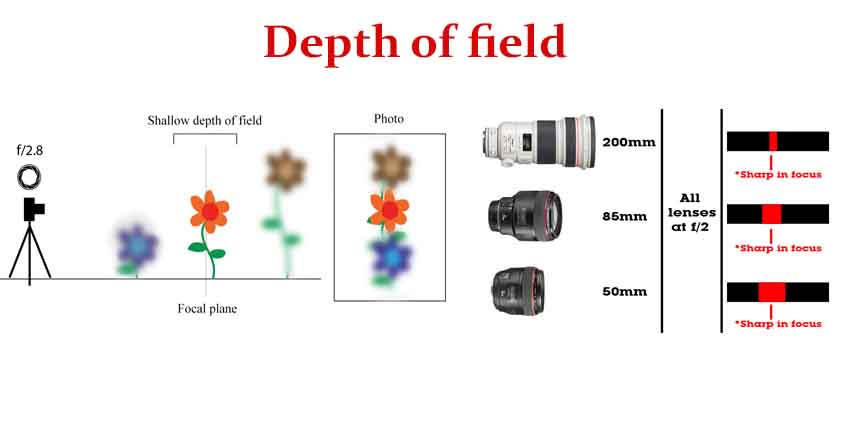
Apr 04, 2018 Written by SAMIUL ANSARI Depth Of Field

Basically, Depth of field is the zone of acceptable sharpness within a photo that will appear in focus. In every picture there is a certain area of your image in front of, and behind the subject that will appear in focus.
Because depth of field has an impact on both the aesthetic and technical quality of a picture. Sometimes you'll want to use an extensive depth of field in order to keep everything sharp.
Who does control depth of field?
a. Aperture:- Aperture refers to the access given to light from the lens to the camera sensors. The size of your aperture controls the amount of light entering your lens. Using the aperture (f-stop) of your lens is the simplest way to control your depth of field as you set up your shot.
Large aperture = Small f-number = Shallow (small) depth of field
Small aperture = Larger f-number = Deeper (larger) depth of field
b. Distence or focal lenght:- Focal Length refers to the capability of a lens to magnify the image of a distant subject, the longer you set your focal length the shallower the depth of field. If you have a 50mm lens set at f/1.4 and an 85mm lens set at f/1.4, and they are both focused on thing at the same distance: The 85mm lens will have a shallower depth-of-field.
Types of depth of field,
a. Shallow depth of field:- Shallow depth of field means that a small portion of the picture is in focus. This is usually accomplished by using wide apertures. It enables you to blur background and foreground details, causing distractions to melt away and allowing you to direct viewers to the focal point in a picture.
b. Great depth of field:- Great depth of field means that a big portion of the picture is in focus. A classic example is when you're photographing a landscape, where generally the most desirable outcome is to capture detail from the foreground to the horizon.